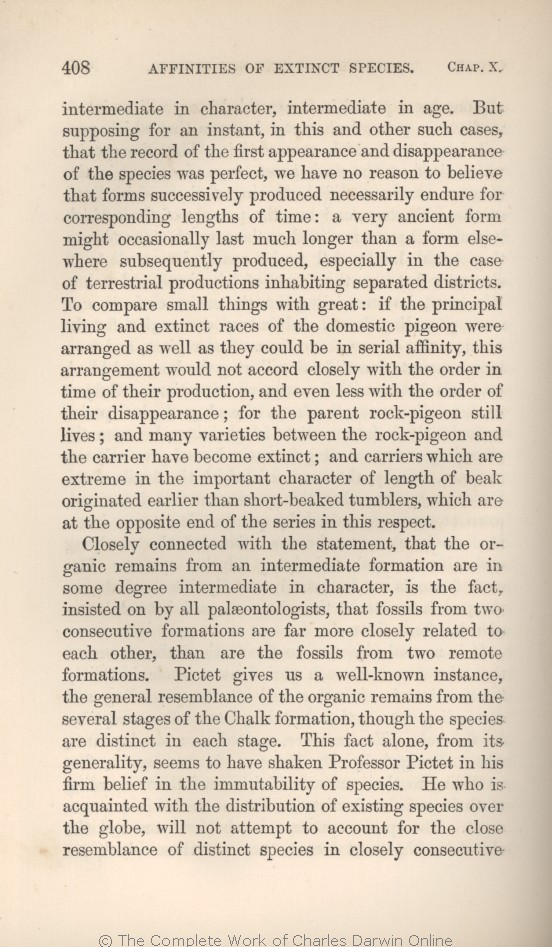intermediate in character, intermediate in age. But supposing for an instant, in this and other such cases, that the record of the first appearance and disappearance of the species was
perfect, | perfect, 1859 1860 1861 1866 1869 |
| complete, which is far from the case, 1872 |
| time: 1859 1860 1861 1866 1869 | | time. 1872 |
| a 1859 1860 1861 1866 1869 | | A 1872 |
| might 1859 1860 1861 1866 1869 | | may 1872 |
| last 1859 1860 1861 1866 1869 | | have lasted 1872 |
| else-where 1869 | | elsewhere 1859 1860 1861 1866 1872 |
| great: 1859 1860 1861 1866 1869 | | great; 1872 |
| as well as they could be 1859 1860 1861 1866 1869 |
| OMIT 1872 |
| accord closely 1869 | | closely accord 1859 1860 1861 1866 1872 |
| even 1869 1872 | | still 1859 1860 1861 1866 |
| still 1869 1872 | | now 1859 1860 1861 1866 |
| ..... 1861 1866 1869 1872 | | same 1859 1860 |
|
|
Closely connected with the statement, that the organic remains from an intermediate formation are in some degree intermediate in character, is the fact, insisted on by all palæontologists, that fossils from two consecutive formations are far more closely related to each other, than are the fossils from two remote formations. Pictet gives
us | us 1869 | | as 1859 1860 1861 1866 1872 |
| Chalk 1860 1861 1866 1869 1872 | | chalk 1859 |
| firm 1859 1860 1861 1866 1869 | firm 1872 |
| ..... 1869 1872 | | the 1859 1860 1861 1866 |
|









